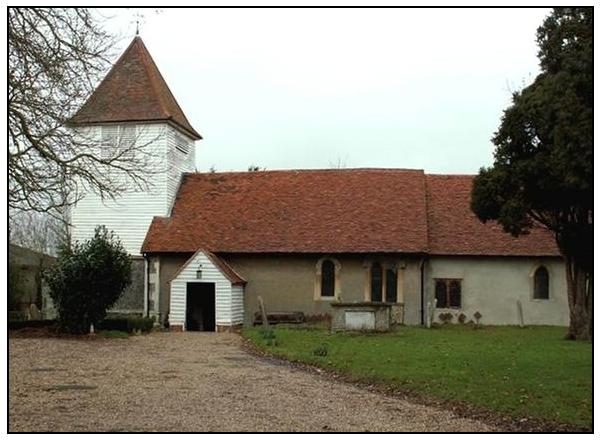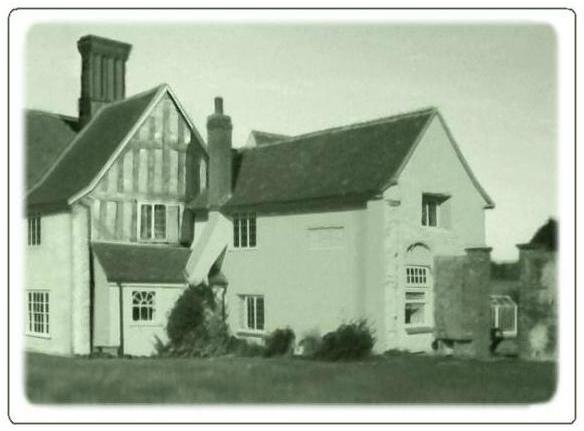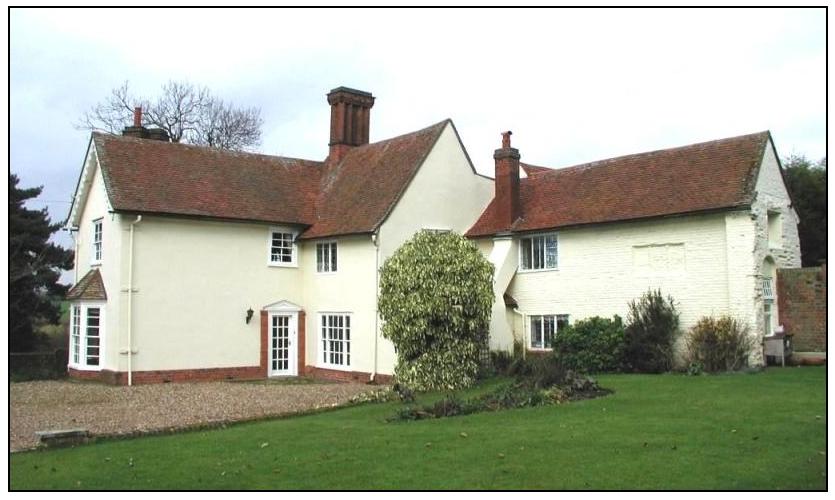Goldhanger and Little Totham have had a joint
Benefice and the same Rectors for centuries resulting in there having been many
connections between the two villages and Churches, so it is appropriate to
include a summary of the Little Totham Church and Little Totham
Hall on this Goldhanger Past website. The early
joint Lords of the Manor resided in
Little Totham Hall, whereas all the later joint Rectors lived in the various
Rectories in Goldhanger...
Follyfaunts House the Old Rectory The Victorian
Rectory and the most recent
Rectory
All Saints Church at Little Totham ( Little Totham Hall is further down this page )
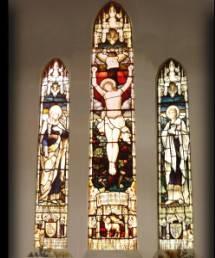
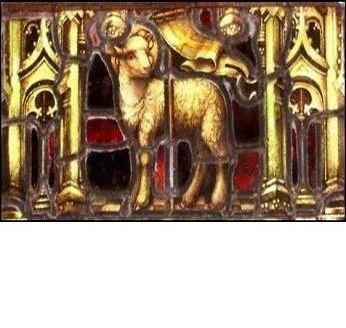
the east window was installed in
Little Totham Church by the Revd Gardner
in memory of his son Cyril who was
killed in the Great War
( the lamb is the lower stained glass
panel in the centre pane )
Much has been
recorded about the Church and its contents so it is appropriate to just provide
links to these site...
http://www.simonknott.co.uk/essexchurches/ltotham.htm
https://www.british-history.ac.uk/rchme/essex/vol3/pp174-175
https://historicengland.org.uk/listing/the-list/list-entry/1308792
and
here are extracts from Lorna Key’s book:
Little Totham - The Story of a small
village relating to the Church...
on
pages 109-110
Although All Saints Church possibly stands on
the site of a much earlier religious wooden construction, the foundations of
the present building were laid in about 1160. The Manor House of Little Totham,
now known as Little Totham Hall, had been built during Edward the Confessor's
reign, in about 1042, and the present church is thought to have been
constructed about 100 years later by the Jarpenville family, the Lords of the
Manor as a chapel for the Manor House. Some of these Norman beginnings can
still be seen in the much decorated doorway on the south side and the smaller,
simpler north doorway. This door has been carbon dated and is reputed to be the
oldest recorded door in a village church in England, dated at about 1080, with
much of the original ironwork still in place.
Like all old buildings, additions and
alterations have taken place over the centuries, from necessity or when money
has become available. Much of the present chancel and nave were 13th century,
with 15th century additions to the roof.
The tower is of two stages, the base being
brick-faced with knapped flint work and well buttressed. It was built in the
16th century. A shield in the South door is dated 1527. It was nearly 100 years
later that the present timber tower was constructed and clad in
weather-boarding capped with a hollow timber spire.
John Sammes originally bought Follyfaunts in
1573 and later acquired the Manor of Little Totham, probably after the death of
John Brown in 1591. It could be that while he was carrying out these extensive
alterations to his property that he used the old wood to construct the wooden
tower of the church. The wood of some of the tower is older than the tower
itself and there is much evidence of it having been part of a house. One of the
floors in the tower is also a re-used 14th century floor.
The Sammes family lived in the Hall for over
100 years and John Sammes, who died at the age of 74, was buried behind the
altar in 1606. In the church there is a stiking carved monument to the family.
There may have been an earlier simple Saxon
church under the present building, which is 12th century. At first this present
building, like all village parish churches of the time, was Roman Catholic,
with images and masses sung in Latin by the priest, and probably wall
paintings.
In 1535, when Henry VIII became head of the
Church of England, many of the church artefacts were destroyed, candles and
lamps were removed and in 1549 the Book of Common Prayer, written in English,
was introduced. Many of the colourful vestments and ornaments were removed.
Little Totham Hall
here are two early maps that show the relationship
between the Hall and the Church...
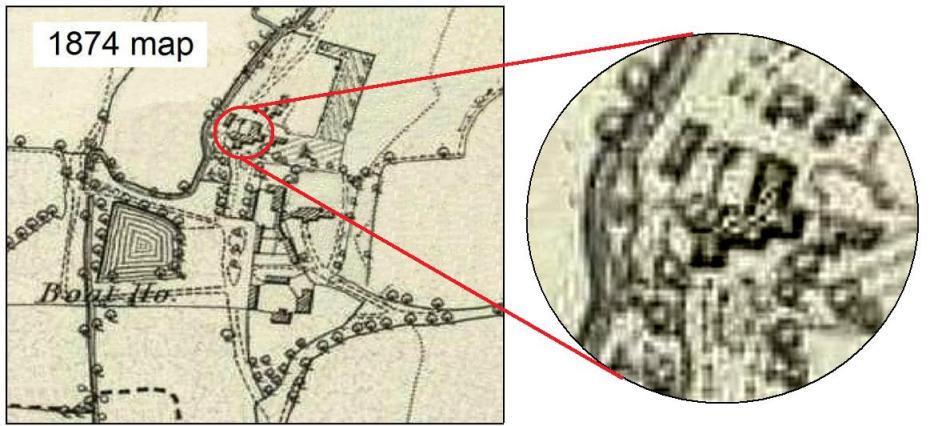
shows two separate buildings for the Hall shows a large wing to
the north of the Hall
|
a 1970s photo for Maura Benham’s
collection |
a recent photo taken from https://highsheriffofessex.com/2019 |
In comparison with the Church it seems very
little has been recorded about the Hall itself and most of the material
available refers mainly to the people who lived there. These two local history
publications are the most relevant sources of information...
Extracts
from Lorna Key’s book: Little Totham - The Story of a small village relating to the Hall...
on
page-16...
Little Totham Hall was probably built
by the Jarpenville family, who settled at Little Totham in the 12th century. In
the third generation through the female line the manor passed to the
Heveninghams, Matilda de Jarpenville marrying Philip de Heveningham.
A part of the estate was handed over to the
Heveninghams in 1271 during the lifetime of Matilda's father. Misfortune struck
the family in the early 14th century when Roger de Heveningham (son of
Matilda), his wife Alice and their son Philip all died between 1318 and 1322.
However they left a grandson who with the his descendants managed the estate
for next 200 years. The present Manor of Little
Totham stands near the Church and was built by John Samms in the
late 16th century. A part of the original wing still remains. It has a park of
80 acres.
on
page-19..
The earliest recorded building in the parish
is Little Totham Hall, or more
correctly Little Totham Manor as
originally it owned the manorial rights. It was built at some period during the
reign of Edward the Confessor in 1042, towards the end of the Danish rule.
During this period the property was divided
into two estates: Little Totham
Manor (the owner was named as Cola) and Rok (or Rook) Hall, owner
Richard and later Gunner. However Little Totham
Manor remained the more important of the two.
The manor of Goldancre (Gold Anchor now
Goldhanger) was united with Little Totham at some period, but there was only
one Court and that was held at Little Totham (Morant, 1768)
on
page-109...
All Saints Church possibly stands on the site
of a much earlier religious, wooden construction; the foundations of the
present building were laid in about 1160. The Manor
House of Little Totham, now known as Little
Totham Hall, had been built during Edward the Confessor's reign, in about
1042, and the present church is thought to have been constructed about 100
years later by the Jarpenville family, the Lords of the Manor, as a chapel for
the Manor House.
By the 1400s the Manor
House was a two-storey timber-framed plastered building. Extensive
renovations were carried out in the 16th century by Sir John Sammes, who
replaced much of the timber with brick.
Extracts
from Maura Benham’s book: Goldhanger - An Estuary Village relating to the Hall...
on page
28...
...records indicate that Sir John Sammes and
his wife were at Little Totham Hall
at that time and had seven children, the eldest son succeeding on Sir John's
death in 1536.
on page
29...
Thomas Sammes was one of the two chief
collectors for the Thurstable Hundred. Later in the 16th century a branch of
the Sammes family came to live firstly at Follyfaunts and then at Little Totham Hall.
on page
30...
The Whyttlocke family, who held the greatest
wealth listed in the two villages at the time of the Lay Subsidy, were people
of local importance for over a hundred years. They rented Follyfaunts in the
early part of the 16th century and had cattle on the farm at Little Totham Hall.
The Heveninghams' Departure from Little Totham Hall and the Sammes' Arrival...
Goldhanger and Little Totham felt the
disruption of change at the Manor House,
for the family which had lived there for nearly 100 years and controlled the
area as Lords of the Manor sold it
and left. Sir Anthony Heveningham had died in 1557. He had five daughters and
two sons and both sons married, the elder twice, but at some time towards the
end of the century The Manor
was sold to John Brown who died in 1591. Probably on the death of John Brown,
John Sammes of Folly-faunts bought The Manor
and rebuilt the house as a brick mansion in a park of about 80 acres. A part of
this structure still remains as a wing of Little Totham Hall.
The Sammes family founded a prosperous
establishment which was to continue at Little Totham Hall
for nearly a century and a half. So after only a short break the Manor was firmly settled again.
on page
39...
The taxation known as the Lay Subsidy (1524)
was based on each man's lands, goods or wages, and 47 names appeared in a joint
list for Goldhanger and Little Totham. Hearth Tax of 1662 and 1671... was based
on the number of hearths belonging to each householder ... Little
Totham Hall stands out as a very large establishment by this measure.
on pages 42 & 43...
The Rector, John Lasby had been rector of
Heybridge for about eighteen years, and had lived with the Freshwater family at
Heybridge Hall, perhaps in a separate establishment as the Hearth Tax of 1671
lists him as having four hearths beneath an entry of twelve for the
Freshwaters. Shortly after marrying Elizabeth Sammes of Little
Totham Hall, grand-daughter of Dame Isabella, he obtained the living
of Goldhanger and Little Totham. The Hearth Tax indicates the size of the
household at Little Totham Hall, the
records of both 1662 and 1671 giving the figure of twenty-three, a very large
number for this part of Essex and showing the Hall to have been a considerable
establishment.
on page 47...
The 18th century - as we move into this century a rather
different picture seems to emerge. We come to know more of the occupations and
activities of the area, particularly in the coastal stretch, but less about the
individuals who lived there. The families at Little
Totham Hall and the Rectory become little more than names; again it
had been at the turn of the century that the old-established family left The Manor and a colourful rector died after
many years of service.
Little Totham Hall had passed from the
Sammes family to John Price whose son Robert was Recorder of Colchester and
Sergeant-at-Law. Robert's son-in-law John Cole was the owner in 1768, but by
1794 it was a part of the Honywood Estate, let on lease as a house, yards and
gardens of just over two acres, the total area with fields, woods, etc. being
185 acres.
here is
one of the very few descriptions of the Hall found online...
https://www.british-history.ac.uk/rchme/essex/vol3/pp174-175#h3-s3 link not found?
“Little Totham Hall,
N.W. of the church, is of two storeys, timber-framed and plastered; the roofs
are tiled. The middle part of the house is of the 15th century, and appears to
have been the original great hall, the
cross-wings of which have been destroyed. On the N.E. is an
irregular addition, partly in brick and of the 16th century; it formed part of a much larger building, extending
towards the N.E.
There are various modern additions. In the S.
wall of the original block is a blocked window of three lights with original
moulded mullions. The E. end of the 16th-century addition has clasping
pilasters at the angles and a blocked doorway with a four-centred head. Inside
the building is an original window-head with the mortices for diamond-shaped
mullions; it now forms a ceiling-beam.
There is also some exposed timber-framing,
and on the first floor a braced tie-beam.”
